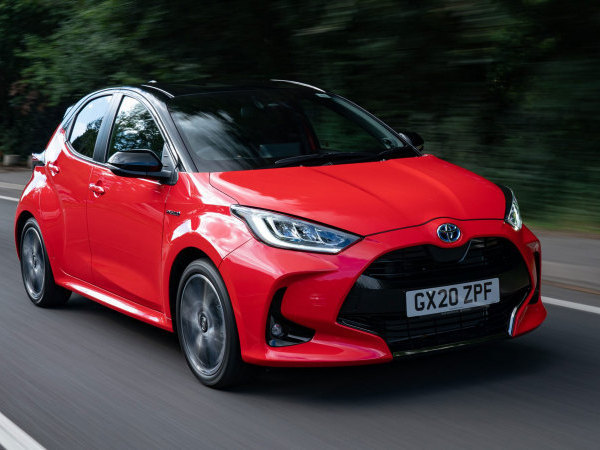Q
How to reset oil life on 2020 RAV4?
To reset the oil life indicator on a 2020 RAV4, first make sure the ignition is on but the engine isn't running. Then use the buttons on the left side of the steering wheel to navigate to the "Vehicle Settings" menu on the dashboard. Select "Oil Maintenance" and hold down the "OK" button to complete the reset. If your model has a touchscreen, you can also go into "Vehicle Settings" on the infotainment display, find the "Maintenance Reminder" function, and reset it manually. Keep in mind that different RAV4 trims might have slight variations in the steps, so it's a good idea to check your owner's manual for the exact procedure. Also, remember that the oil life indicator is an estimate based on mileage and engine conditions—resetting it starts the count fresh, but your actual service interval should still depend on your driving habits and oil quality. If you often drive in stop-and-go traffic or hot weather, consider shortening the interval to keep the engine in top shape. Using Toyota-recommended oil during regular maintenance helps extend engine life too. If you're not comfortable doing the reset yourself, just contact your authorized service center for help.
Special Disclaimer: This content is published by users and does not represent the views or position of PCauto.
Related Q&A
Q
Is the 2020 RAV4 Hybrid good in snow?
The 2020 RAV4 Hybrid handles pretty well in the snow, and that's mostly down to how its Electronic On-Demand All-Wheel Drive (E-Four) works with the hybrid system. The E-Four can quickly shift torque between the front and rear wheels, boosting grip on slippery surfaces, while the hybrid's electric motor responds fast, cutting down on wheel spin. On top of that, the standard Snow driving mode tweaks power delivery and braking, and when you pair that with decent ground clearance and stability control, it's solid for light to moderate snow. Now, don't get me wrong—it's better in the snow than a regular front-wheel-drive SUV, but if you're dealing with blizzards or icy roads, you still need winter tires or chains to be safe. Folks in warm climates might not care much about snow performance, but knowing these features gives you a full picture of the vehicle's all-weather ability, especially if you're planning a road trip to colder areas. Day to day, the hybrid system's low fuel use and quiet ride are big pluses too, making it good for both city driving and long hauls.
Q
Does the 2020 RAV4 Hybrid have good resale value?
The 2020 RAV4 Hybrid really holds its value well as a used car, mainly thanks to Toyota's strong local brand recognition and the long-standing reputation for reliability of its hybrid system. Under the hood, it's got that 2.5L Atkinson-cycle engine paired with an electric motor—great fuel economy, solid power delivery, and Toyota's hybrid tech has been market-tested for years, so people trust it to last. Looking at actual market performance, compared to the gas-only RAV4 from the same year, the hybrid version typically retains 5-8% more of its residual value, especially low-mileage models with complete service records. Other factors affecting resale value include regular maintenance history, exterior color (white and silver are more popular), and whether the original factory warranty is still active. It's worth noting that battery life is usually a top concern for used hybrid buyers, but Toyota backs the hybrid battery with an 8-year or 100,000-kilometer warranty, which helps ease those worries a bit. If you're thinking about selling it down the line, keeping full service records and getting regular battery health checks will definitely help maintain better residual value.
Q
How much is a 2020 RAV4 Hybrid worth?
The 2020 RAV4 Hybrid currently ranges in price from around RM120,000 to RM160,000 on the used car market, with the exact figure depending on factors like condition, mileage, trim level, and remaining warranty period. Under the hood, it packs a 2.5-liter hybrid powertrain that delivers impressive fuel efficiency—around 4.7 liters per 100 kilometers combined—along with 181 horsepower, striking a nice balance between energy saving and driving dynamics. Higher-spec models might come with features like a panoramic sunroof, JBL sound system, or Toyota Safety Sense (think pre-collision braking and lane-keeping assist), which can really push up the resale value. Before buying, it’s smart to check service records and battery health through Toyota’s certified pre-owned program or a trusted inspection service—hybrid battery longevity is usually a top concern for buyers, and an active factory warranty can seriously boost a used RAV4 Hybrid’s value. Rivals like the Honda CR-V or Mazda CX-5 might be a bit cheaper on the used market, but the RAV4 Hybrid tends to hold its value better thanks to Toyota’s solid reputation for hybrid tech. If you’re planning to finance, keep in mind banks might cap loans at around 70% for cars that are five years old.
Q
How much is insurance on a 2020 Toyota RAV4?
The insurance cost for a 2020 Toyota RAV4 varies based on factors like vehicle age, trim level, owner's age, driving record, and coverage options. Generally, annual premiums for Comprehensive Coverage range from RM2,000 to RM5,000, while Third-Party Liability might be as low as around RM1,000. To get an exact quote, you'll need to provide details to the insurance company, such as the engine capacity (like the 2.0L or 2.5L variants), body color (some colors can affect premiums), and the security of where the vehicle is parked. It's worth noting that hybrid RAV4 models might have slightly higher premiums due to potentially higher repair costs, but their long-term fuel efficiency can offset some of those expenses. It's advisable to use online comparison platforms or insurance agents to get quotes from multiple companies. Also, ask about the terms for No Claim Discount (NCD) – typically, you can get up to a 55% premium reduction for several consecutive claim-free years. Additionally, installing a factory-fitted anti-theft system or choosing a higher voluntary excess amount can lower premiums, but you need to balance the risks and costs.
Q
How to replace cabin filter 2020 RAV4?
Changing the cabin air filter on a 2020 RAV4 is actually pretty straightforward. First, open the passenger-side glove box, empty out any stuff inside, then locate the damper rod on the right side. Just gently press the clip to remove it. After that, squeeze the stoppers on both sides of the glove box inward to let it hang all the way down. Now you can see the rectangular cabin air filter cover behind it—slide the cover's clips sideways to take out the old filter. Make sure the arrow mark on the side of the new filter faces toward the inside of the car when installing it. Finally, reverse the steps to put everything back together. It's recommended to replace the cabin air filter every 10,000 to 20,000 kilometers or once a year, especially in the climate environment of high temperature and humidity all year round, the filter tends to collect dust and mold. Regular replacements keep the air inside fresh and protect the AC system. When shopping for a filter, consider activated carbon ones—they not only filter dust but also absorb odors. If you notice the AC airflow has significantly decreased or there's a strange smell, that's a sign to check the filter. You can also periodically use a vacuum cleaner to lightly clean the filter surface to extend its lifespan.
Q
What is the warranty on the 2020 RAV4?
The 2020 RAV4 typically comes with a basic factory warranty of 3 years or 100,000 kilometers (whichever comes first). Powertrain components might have a longer coverage of 5 years or 150,000 kilometers, though exact terms can vary slightly depending on the purchase date or dealer promotions. It's worth noting that the hybrid version's battery pack usually gets an extended warranty of 8 years or 160,000 kilometers, showing the brand's confidence in its new energy tech. Beyond the standard factory warranty, many dealers offer extended warranty packages for owners to consider. I'd recommend asking for details on what these add-ons cover and their terms when buying the car. Regular maintenance is key to keeping the warranty valid—make sure to get servicing done on time at authorized service centers and keep complete records, otherwise you might risk voiding your warranty benefits. Knowing the warranty ins and outs helps owners better plan their ownership costs, like figuring out which repairs might be covered for free during the warranty period, and also avoids situations where improper use could invalidate the warranty.
Q
How often to replace car battery 2020 Toyota RAV4?
The battery replacement cycle for the 2020 Toyota RAV4 typically ranges from 3 to 5 years, depending on the battery type, usage habits, and climate conditions. The factory-installed maintenance-free lead-acid battery usually lasts around 4 years under normal use. However, frequent short trips, long periods of inactivity, or heavy use of on-board electrical devices can shorten its lifespan. It's advisable to check the battery's health annually, especially in hot and humid environments where high temperatures accelerate electrolyte evaporation and degrade battery performance. If you notice sluggish starting, dim headlights, or the battery warning light illuminates, it's time for a check. Many repair shops now offer free battery testing services to determine if replacement is needed in advance. When choosing a new battery, consider enhanced options like AGM or EFB batteries, which are more resistant to high temperatures and have longer lifespans. Additionally, reducing electrical device use after the engine is off and regularly cleaning the battery terminals can extend its service life. If your vehicle is equipped with an automatic start-stop system, be sure to use a dedicated battery designed for this technology, as regular batteries cannot handle the frequent starting demands.
Q
Are all 2020 RAV4 hybrids AWD?
The 2020 RAV4 Hybrid does come standard with all-wheel drive (AWD) across the board. That's Toyota's call for the hybrid version, unlike the gas-powered model which lets you choose between front-wheel drive or AWD. The RAV4 Hybrid's AWD setup uses a separate electric motor for the rear axle, so there's no driveshaft needed—it smartly distributes torque, boosting stability on wet roads while still keeping fuel economy in check. What's worth pointing out is this E-Four electronic AWD system can adjust the front-rear power split in real time based on conditions, maxing out at 20:80. It really shines in corners or on low-grip surfaces. Sure, having AWD standard adds a tiny bit of weight, but the hybrid system's efficiency makes up for that extra energy use. For drivers who regularly deal with rainy, slippery conditions, this setup takes the guesswork out of choosing and ups the safety factor. Other hybrid SUVs in the same class might offer front-wheel drive or AWD options, but the RAV4 Hybrid's commitment to standard AWD definitely gives it a unique edge. Still, when buying, you gotta weigh your actual needs—AWD does mean slightly higher maintenance costs and a bit more complexity than a front-wheel drive setup.
Q
How much does it cost to maintain a 2020 RAV4 Hybrid?
The daily maintenance costs for the 2020 RAV4 Hybrid depend on the service items and mileage driven. Regular maintenance like oil changes, filter replacements, and basic inspections typically costs around RM300 to RM500, performed every 10,000 kilometers or 6 months. Major services, which include replacing brake fluid, transmission fluid, and coolant, might set you back RM800 to RM1,200 and are recommended every 40,000 kilometers. The hybrid system's battery pack generally doesn't require frequent maintenance, but regular checks of the electrical circuits and cooling system can extend its lifespan. Tire replacements and brake pad wear depend on driving habits, with an estimated cost of RM1,500 to RM2,500 every 30,000 to 50,000 kilometers. Additionally, choosing dealership servicing ensures parts compatibility and warranty validity, while third-party workshops may offer lower prices but require careful evaluation of technical reliability. The RAV4 Hybrid offers good fuel economy, saving on petrol costs over time, though potential repair costs for hybrid components can be higher, so it's advisable to set aside some budget for unexpected needs. Understanding the maintenance schedule and following the manual's recommendations can effectively reduce unexpected expenses while keeping the vehicle in good condition.
Q
Where is the 12 volt battery in a 2020 RAV4 hybrid?
The 12-volt battery in the 2020 RAV4 Hybrid is located under the cover on the right side of the trunk. Just lift up the floor mat and remove the plastic cover to access it. This setup is designed to balance the hybrid system's weight distribution and free up space in the engine bay. Hybrid models often relocate the traditional lead-acid battery to the trunk because the engine compartment needs more room for the high-voltage battery pack and motor systems. Plus, the trunk location helps avoid the high-temperature environment that can shorten battery life. It's important to note that if you need to replace or service this battery, it's best to have a professional technician handle it. Hybrid systems involve high-voltage circuits, so improper handling could be risky. In daily use, you can monitor its status through the battery indicator light on the dashboard. If you experience starting problems or notice issues with electronic devices, it might mean the 12-volt battery is low on charge. In that case, you can try jump-starting it with jumper cables, but make sure to connect the positive and negative terminals correctly. The 12-volt battery in a hybrid car is mainly used to start the vehicle and power the low-voltage systems, with a clear division of labor from the high-voltage battery pack. This design effectively improves energy efficiency.
Latest Q&A
Q
Is the 2020 RAV4 Hybrid good in snow?
The 2020 RAV4 Hybrid handles pretty well in the snow, and that's mostly down to how its Electronic On-Demand All-Wheel Drive (E-Four) works with the hybrid system. The E-Four can quickly shift torque between the front and rear wheels, boosting grip on slippery surfaces, while the hybrid's electric motor responds fast, cutting down on wheel spin. On top of that, the standard Snow driving mode tweaks power delivery and braking, and when you pair that with decent ground clearance and stability control, it's solid for light to moderate snow. Now, don't get me wrong—it's better in the snow than a regular front-wheel-drive SUV, but if you're dealing with blizzards or icy roads, you still need winter tires or chains to be safe. Folks in warm climates might not care much about snow performance, but knowing these features gives you a full picture of the vehicle's all-weather ability, especially if you're planning a road trip to colder areas. Day to day, the hybrid system's low fuel use and quiet ride are big pluses too, making it good for both city driving and long hauls.
Q
Does the 2020 RAV4 Hybrid have good resale value?
The 2020 RAV4 Hybrid really holds its value well as a used car, mainly thanks to Toyota's strong local brand recognition and the long-standing reputation for reliability of its hybrid system. Under the hood, it's got that 2.5L Atkinson-cycle engine paired with an electric motor—great fuel economy, solid power delivery, and Toyota's hybrid tech has been market-tested for years, so people trust it to last. Looking at actual market performance, compared to the gas-only RAV4 from the same year, the hybrid version typically retains 5-8% more of its residual value, especially low-mileage models with complete service records. Other factors affecting resale value include regular maintenance history, exterior color (white and silver are more popular), and whether the original factory warranty is still active. It's worth noting that battery life is usually a top concern for used hybrid buyers, but Toyota backs the hybrid battery with an 8-year or 100,000-kilometer warranty, which helps ease those worries a bit. If you're thinking about selling it down the line, keeping full service records and getting regular battery health checks will definitely help maintain better residual value.
Q
How much is a 2020 RAV4 Hybrid worth?
The 2020 RAV4 Hybrid currently ranges in price from around RM120,000 to RM160,000 on the used car market, with the exact figure depending on factors like condition, mileage, trim level, and remaining warranty period. Under the hood, it packs a 2.5-liter hybrid powertrain that delivers impressive fuel efficiency—around 4.7 liters per 100 kilometers combined—along with 181 horsepower, striking a nice balance between energy saving and driving dynamics. Higher-spec models might come with features like a panoramic sunroof, JBL sound system, or Toyota Safety Sense (think pre-collision braking and lane-keeping assist), which can really push up the resale value. Before buying, it’s smart to check service records and battery health through Toyota’s certified pre-owned program or a trusted inspection service—hybrid battery longevity is usually a top concern for buyers, and an active factory warranty can seriously boost a used RAV4 Hybrid’s value. Rivals like the Honda CR-V or Mazda CX-5 might be a bit cheaper on the used market, but the RAV4 Hybrid tends to hold its value better thanks to Toyota’s solid reputation for hybrid tech. If you’re planning to finance, keep in mind banks might cap loans at around 70% for cars that are five years old.
Q
How much is insurance on a 2020 Toyota RAV4?
The insurance cost for a 2020 Toyota RAV4 varies based on factors like vehicle age, trim level, owner's age, driving record, and coverage options. Generally, annual premiums for Comprehensive Coverage range from RM2,000 to RM5,000, while Third-Party Liability might be as low as around RM1,000. To get an exact quote, you'll need to provide details to the insurance company, such as the engine capacity (like the 2.0L or 2.5L variants), body color (some colors can affect premiums), and the security of where the vehicle is parked. It's worth noting that hybrid RAV4 models might have slightly higher premiums due to potentially higher repair costs, but their long-term fuel efficiency can offset some of those expenses. It's advisable to use online comparison platforms or insurance agents to get quotes from multiple companies. Also, ask about the terms for No Claim Discount (NCD) – typically, you can get up to a 55% premium reduction for several consecutive claim-free years. Additionally, installing a factory-fitted anti-theft system or choosing a higher voluntary excess amount can lower premiums, but you need to balance the risks and costs.
Q
How to replace cabin filter 2020 RAV4?
Changing the cabin air filter on a 2020 RAV4 is actually pretty straightforward. First, open the passenger-side glove box, empty out any stuff inside, then locate the damper rod on the right side. Just gently press the clip to remove it. After that, squeeze the stoppers on both sides of the glove box inward to let it hang all the way down. Now you can see the rectangular cabin air filter cover behind it—slide the cover's clips sideways to take out the old filter. Make sure the arrow mark on the side of the new filter faces toward the inside of the car when installing it. Finally, reverse the steps to put everything back together. It's recommended to replace the cabin air filter every 10,000 to 20,000 kilometers or once a year, especially in the climate environment of high temperature and humidity all year round, the filter tends to collect dust and mold. Regular replacements keep the air inside fresh and protect the AC system. When shopping for a filter, consider activated carbon ones—they not only filter dust but also absorb odors. If you notice the AC airflow has significantly decreased or there's a strange smell, that's a sign to check the filter. You can also periodically use a vacuum cleaner to lightly clean the filter surface to extend its lifespan.
View MoreRelated News

2026 Toyota RAV4 to Launch in China as the Wildlander
MichaelAug 13, 2025

2026 Toyota RAV4 Debuts: Stunning Inside & Out!
WilliamMay 22, 2025

Want a Toyota Hybrid? Get Ready to Wait
LienMar 31, 2025

Brand-new Toyota RAV4 Spy Shots Revealed: TNGA-K platform, Power Upgraded!
RobertDec 3, 2024

Australian auto market data in July: Toyota RAV4 sales won the first place, PHEV models increased by
AshleyAug 6, 2024
View More













Pros
Cons